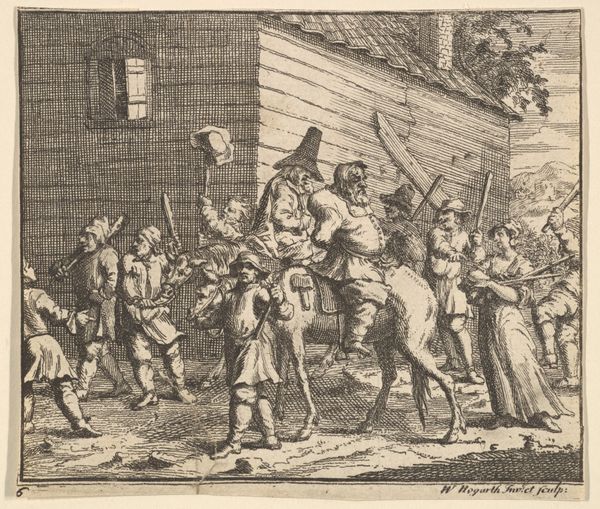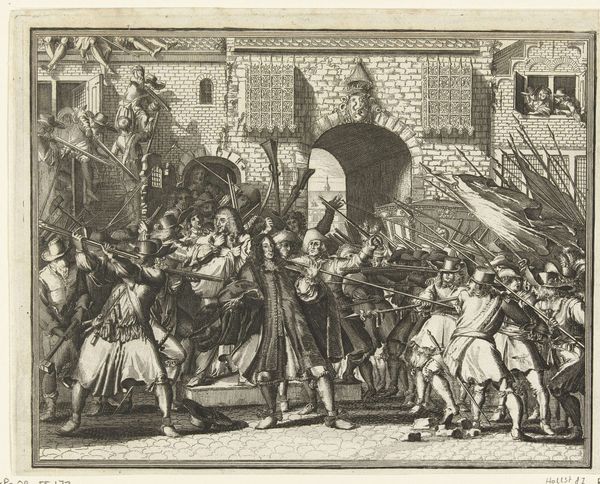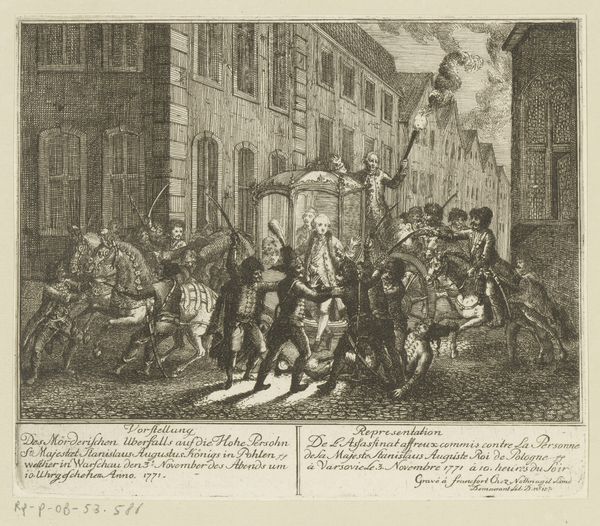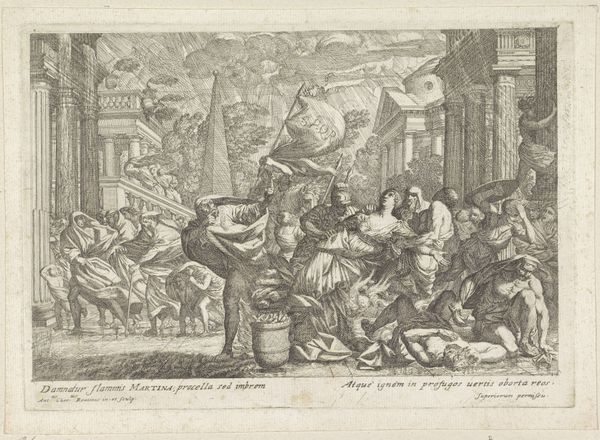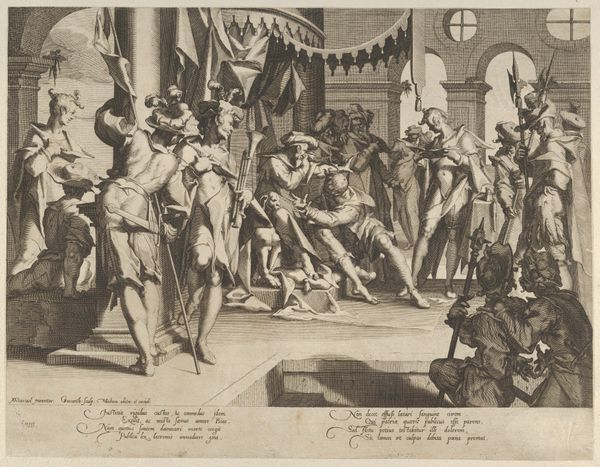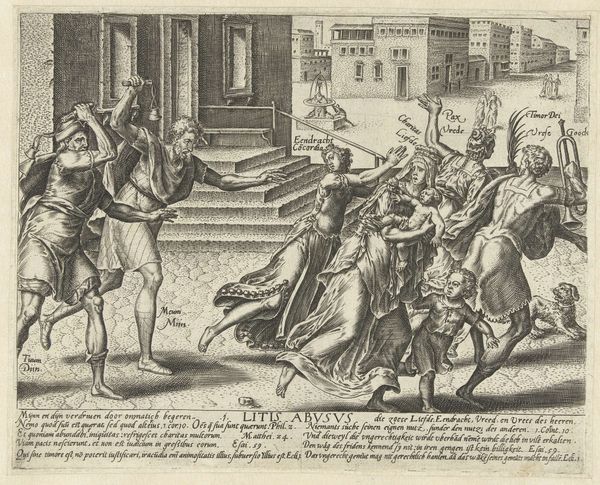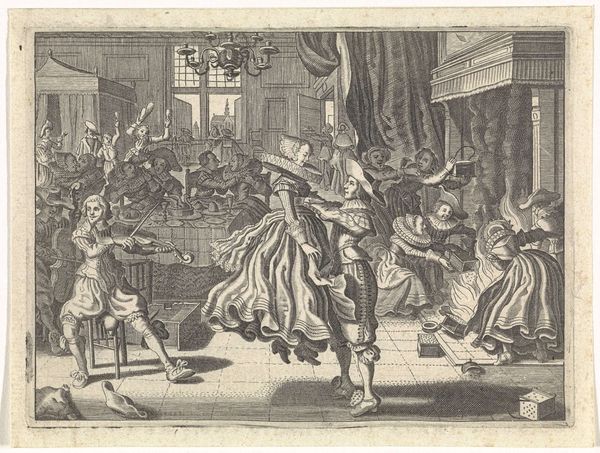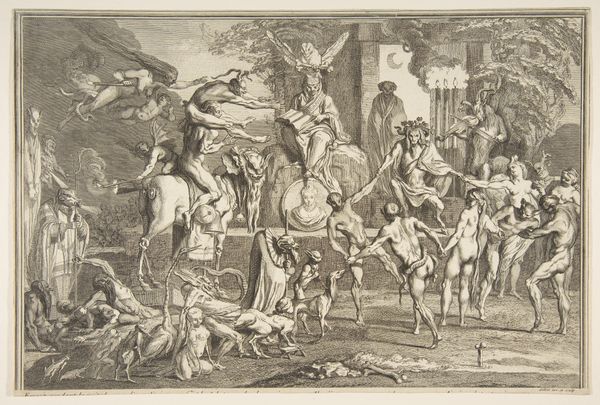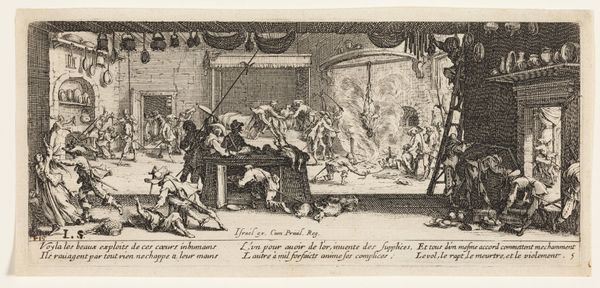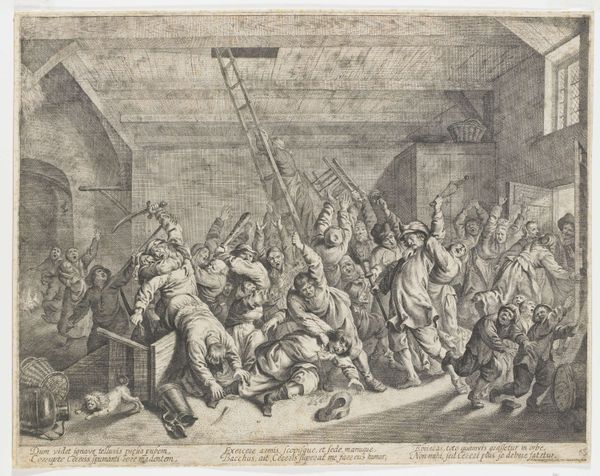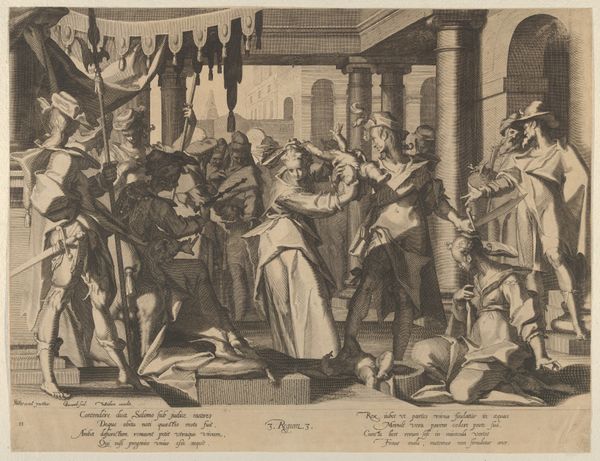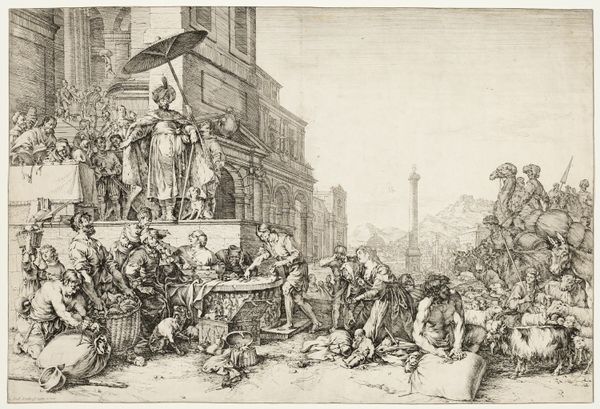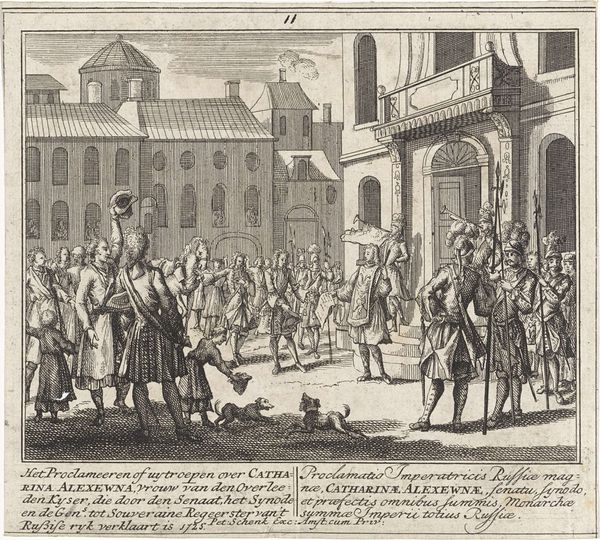
Hudibras and the Skimmington (Seventeen Small Illustrations for Samuel Butler's Hudibras, no. 9) 1721 - 1726
0:00
0:00
drawing, print, etching, engraving
#
drawing
#
narrative-art
#
baroque
# print
#
etching
#
caricature
#
horse
#
men
#
engraving
Dimensions: sheet: 4 3/4 x 9 9/16 in. (12.1 x 24.3 cm) (trimmed)
Copyright: Public Domain
Editor: Here we have William Hogarth’s "Hudibras and the Skimmington," an etching and engraving dating from the 1720s, illustrating Samuel Butler's poem. It feels incredibly chaotic. What exactly am I looking at? How should I interpret this wild scene? Curator: Indeed! Hogarth encapsulates a Skimmington Ride. It was a very public shaming ritual—a symbolic, often boisterous, and sometimes violent community act of moral regulation. Editor: A shaming ritual? That sounds intense. Curator: Look closely. The central figure is often a man, or an effigy of a man, being paraded in a grotesque fashion. But do you see how it’s never *just* about the individual? Hogarth captures something broader here; the weight of collective disapproval. In that time, the community played a strong role in people’s behavior, much more than today. Editor: So, the Skimmington Ride was kind of a warning? Like, "step out of line and you're next?" Curator: Precisely! Note the figures watching from the windows and from behind the wooden gate in the background. Their presence as spectators reinforces that idea of public performance and collective judgment. What symbols or objects strike you? Editor: I see animal horns. Is that mocking someone? Curator: It symbolizes cuckoldry – infidelity. The skimming ladle would often be used by the mob to hit the offender. These details were important cultural and social symbols in the 18th century. How do these old traditions make you feel today? Editor: It's jarring to see how public and aggressive the shaming was. It also makes me think about how our modern forms of online shaming—cyberbullying or “call-out culture"—are similar, but also different. Curator: Precisely! And understanding Hogarth’s imagery grants a new lens on how these cultural memory endures and manifests today. Thank you for helping reveal its depths.
Comments
No comments
Be the first to comment and join the conversation on the ultimate creative platform.
